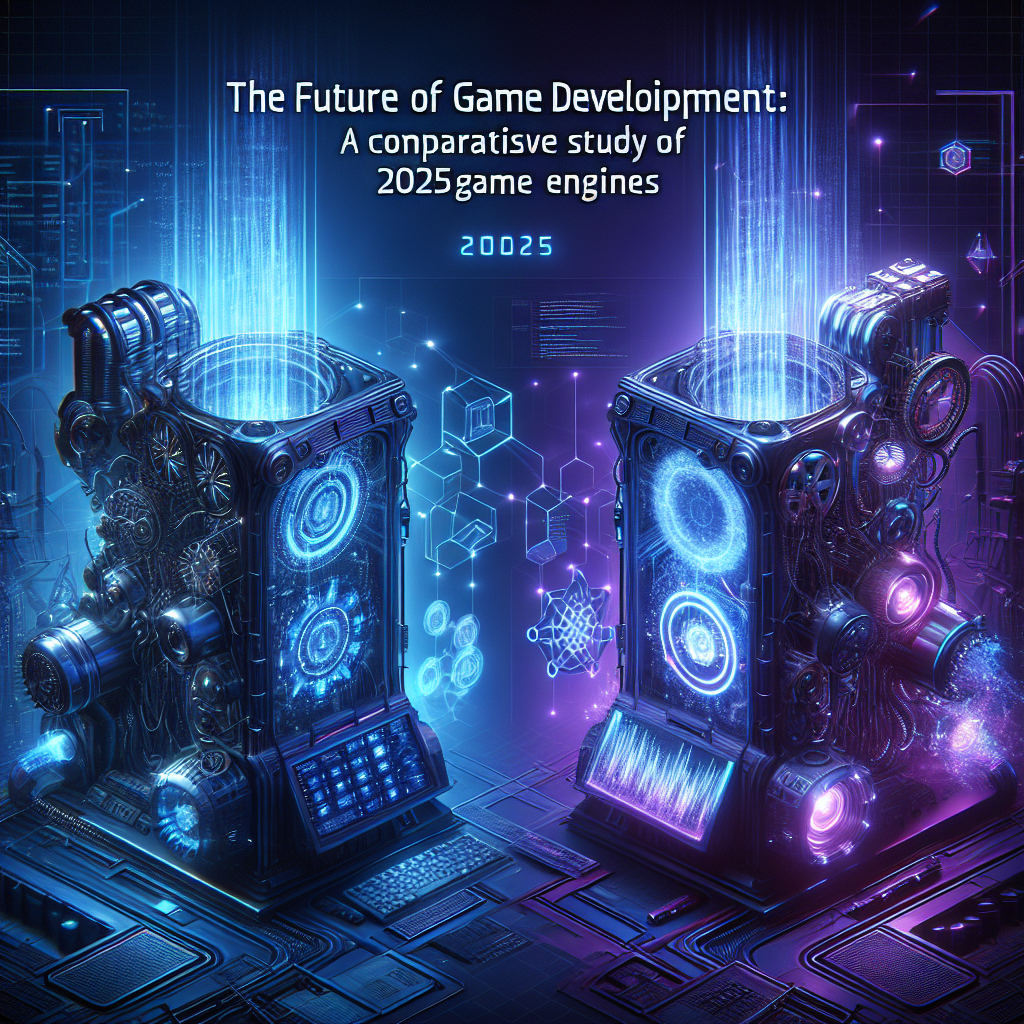The Future of Game Development: A Comparative Study of 2025 Game Engines
As we peer into the future of game development, the landscape in 2025 promises to be an exciting playground for developers, gamers, and creatives alike. The rapid evolution of technology is pushing the boundaries of what’s possible, transforming both the visual and functional aspects of games. At the heart of this transformation are game engines, the development frameworks that empower creators to bring their visions to life. This article explores the leading game engines of 2025, highlighting their features, strengths, and the potential directions the industry may take.
The Major Contenders
In 2025, several game engines are vying for dominance in the development world. Among them, Unreal Engine 5, Unity, Godot, and the emerging Amazon Lumberyard have caught the attention of developers. Each engine possesses unique attributes that cater to different segments of the gaming market.
1. Unreal Engine 5
Unreal Engine 5, developed by Epic Games, has become the gold standard for high-end visuals and complex physics simulations. Its cutting-edge features like Nanite (virtualized geometry) and Lumen (dynamic global illumination) have redefined how developers approach rendering.
-
Strengths: Unreal Engine excels in providing lifelike graphics and intricate world-building. The engine’s robust marketplace offers ready-made assets and plugins that can help streamline development. Moreover, its proven track record in creating AAA games solidifies its place at the forefront.
- Future Directions: In 2025, Unreal Engine is expected to incorporate AI-driven tools for procedural generation, paving the way for more expansive and interactive environments. Developers might also leverage deeper integration with augmented and virtual reality experiences, further extending the player’s immersive experience.
2. Unity
Unity remains one of the most versatile engines, widely used for both 2D and 3D game development. Its user-friendly interface and vast community support make it a favorite among indie developers and large studios alike.
-
Strengths: Unity is renowned for its accessibility, with a wealth of educational resources available. Its asset store is filled with user-generated content, and the engine supports a myriad of platforms, making it easy to deploy games across different devices.
- Future Directions: By 2025, Unity is expected to enhance its AI-driven game design capabilities, enabling developers to create smarter, more adaptive gameplay. The integration of machine learning features will allow games to evolve based on player behavior, thus increasing engagement and replayability.
3. Godot
Godot is making significant strides as an open-source alternative for game development. Its lightweight architecture and GDScript programming language offer a refreshing approach to creating games.
-
Strengths: Godot boasts an active community and a commitment to open-source development, making it appealing for budget-conscious developers. Its unique scene system promotes efficient development processes, and the engine is equipped with excellent 2D capabilities.
- Future Directions: The projected growth of Godot involves improvements in 3D capabilities and more advanced tools for mobile game development. As the engine continues to evolve, the potential for integration with emerging technologies like blockchain gaming is also on the horizon.
4. Amazon Lumberyard
Amazon Lumberyard has carved out a niche for itself, particularly in the realm of multiplayer game development and integration with cloud services via Amazon Web Services (AWS).
-
Strengths: One of Lumberyard’s significant advantages is its emphasis on multiplayer and community-driven gaming experiences. The tight integration with AWS allows developers to easily deploy games that leverage the cloud, enhancing scalability and performance.
- Future Directions: By 2025, Lumberyard is anticipated to focus on enhancing its tools for the burgeoning field of live-service games, enabling developers to roll out content updates seamlessly. Furthermore, deeper integration with Twitch for live-streaming functionalities may redefine how games engage with audiences.
Comparative Aspects
In this competitive landscape, several dimensions can be compared among these game engines:
- Graphics and Rendering: Unreal Engine leads in high-fidelity visuals, while Godot and Unity offer flexibility for different aesthetic styles.
- Ease of Use: Unity and Godot are generally considered user-friendly for newcomers, whereas Unreal Engine may have a steeper learning curve but pays off with sophisticated features.
- Community and Resources: Unity and Godot enjoy robust communities, providing extensive resources and forums for assistance. Unreal remains strong but may have a smaller niche community focused on high-end development.
- Platform Flexibility: Unity shines here, supporting more platforms than most engines. Lumberyard, however, is tailored more for deep online experiences.
- Cost: Godot stands out as a completely free option, while Unity and Unreal have various pricing models depending on the scale of the project.
Conclusion
The future of game development in 2025 is bright and varied, thanks to the diverse offerings of contemporary game engines. Each engine serves a distinct purpose, catering to a wide array of developers and gaming experiences. A common underpinning across all these tools is the thrust towards automation, enhanced user experiences, and community engagement. As the demand for high-quality, engaging games continues to rise, so too will the ingenuity and adaptability of the tools available to creators. With the right engine in hand, the possibilities for the future of gaming truly feel limitless.




